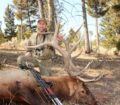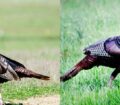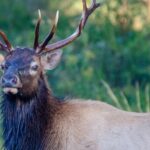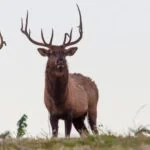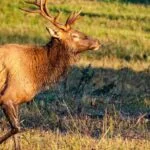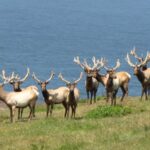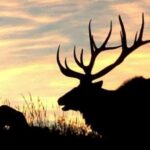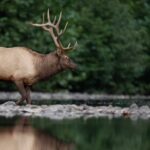Like you, I’ve had elk guides before. I thought you may have wanted to kill me. But I’ve also hunted with some elk guides who have become lifelong friends because they’ve helped and taught me. A good guide is often critical in whether or not you take an elk. But what does that guide think of you, and what’s he trying to teach you? I’ve asked two elk guides to confess their innermost secrets about their elk-hunting clients and how they help them take elk.
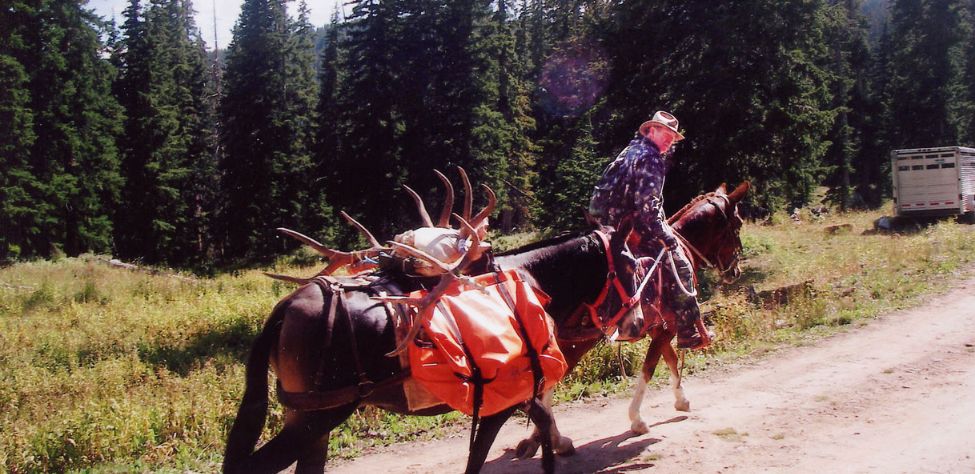
Chad Schearer
Chad Schearer of Great Falls, Montana, once guided customers for 14 years to mule deer, antelope, elk, bear, and fish. “I’m uncomfortable wearing a coat and a tie and fighting traffic to work,” Schearer says. “However, often the out-of-shape, overweight, middle-aged-plus people who live in that world are the hunters I guide.
“Another guide once told me, ‘My client’s my weapon. Sometimes, I have excellent weapons, sometimes weapons that don’t shoot well, and often, my weapons aren’t in peak condition. But my job as a guide is hunting with my weapon that week.’ This statement sums up my philosophy of guiding.”
Schearer confesses that he evaluates each hunter’s physical condition and shooting ability before and during the hunt. Schearer realizes that some hunters can shoot accurately at 200 to 300 yards, while others don’t shoot well at 50 yards. He first talks to the hunter on the phone to learn his general physical condition and determine how much hard hunting he can handle.
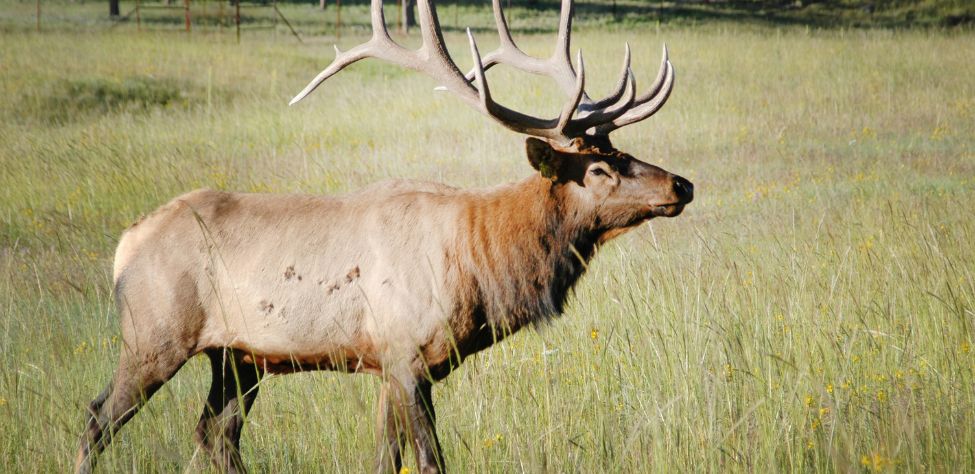
“I don’t want to put this hunter in terrain that’s so rough he’s miserable during the hunt,” Schearer explains. “If a guy isn’t accustomed to exercise, then I don’t want to get his heart rate so high that he may have a heart attack. I’ll know I must leave camp earlier in the morning with this hunter so we can walk slower and get into elk country.”
Schearer learns quickly whether or not the hunter will need 20 minutes or 2 hours to reach the top of a mountain. Once Schearer judges each hunter’s physical condition, he can decide where the hunter can hunt elk.
“After the first day of hunting and with the background information I’ve learned over the phone, I have a good idea of whether a hunter can reach the elk I’ve spotted or if I need to find a bedded elk for that hunter,” Schearer explains. “We’ll only make stalks on elk he physically has a chance of taking. I also have to determine if my hunter can get the shot. If we have to run up the side of a mountain to reach a spot to take the shot, my hunter may be breathing so heavily and be so out of breath that he can’t hold the rifle steady enough to make an accurate shot. That’s why I’ll often stop on the back side of a mountain and let my hunter rest and regain his strength before coming over the top of the mountain where we expect to see the elk.”
Schearer maximizes his hunting time in elk country. “If I know my hunter isn’t in good physical condition and only has enough energy and stamina to climb the mountain one time that day, I’ll pack a lunch, carry water, and plan to stay on the mountain all day.”
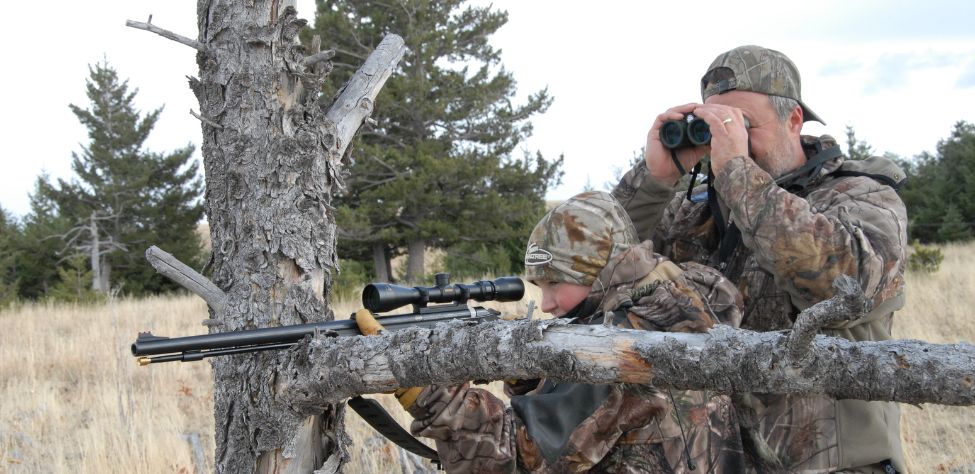
Wayne Carlton
Wayne Carlton of Montrose, Colorado, one of the nation’s leading elk hunters, confesses, “Many hunters don’t know how to call elk. They can blow cow calls and bugle but don’t know how to talk to elk.
“Elk, don’t talk in a monotone; put emotion and feeling into their calling, just as you do when talking to your girlfriend. Listen to the elk as they communicate with each other. They put different inflections in their voices, just as turkeys do. For instance, if you’re giving calls like yeeoow, you’re making an elk call. But, if you want to talk to an elk, you have to push more air through the call and say yeeooooooooooooow, which sounds like a much different conversation with more feeling and emotion in it.
“When I ask an elk hunter if he means what he’s saying when he’s calling elk, I want to know if he’s putting enough emotion into his call to shock the bull into bugling. Most people give generic bugles, but I scream as loudly as possible with great urgency on a high-pitched call when I’m bugling to get an elk to bugle back. I’ve observed that some elk hunters don’t say anything when talking to elk.”
Carlton also confesses that he has to teach hunters when to hunt elk where. “I think the best time to hunt elk when hunting in canyons is the middle of the day,” Carlton reports. “If you set up early in the morning before daylight, often you’ll make so much noise and create so much commotion that you’ll spook more elk than you see. I’m a mid-day hunter because I’m trying to hunt the elk at a time in areas where they feel comfortable, safe, and secure.
“I’ve developed a pattern for watching elk early to see where they like to stand and bed in the middle of the day. Then, I feel I have a better chance of making a stalk or setting up a tree stand to take the elk. I teach my hunters to do all their hiking, climbing, and getting into position to take the elk in the morning. Then, my hunter and I aren’t as physically stressed in the middle of the day when we have to make a stalk.
“I prefer to be on the back side of a mountain from where the animals are bedded down, so they can’t see or smell me. By getting above the elk, we have a better vantage point to see and observe them, and the drafts going up the mountain also prevent the elk from smelling us. Once my hunter and I finally make our stalk to the elk, we’re usually traveling down, which isn’t nearly as strenuous as climbing up to the elk.”
Hunters hire guides because they don’t know how, where, and/or when to call elk. Now you understand what some of the nation’s top elk guides know that can help you hunt elk successfully this season.
Looking for more content? Check out our YouTube channel and watch “Problems with the Hunters I Guide” by John E. Phillips.
Expert Guidebooks on Elk Hunting: Best Sellers
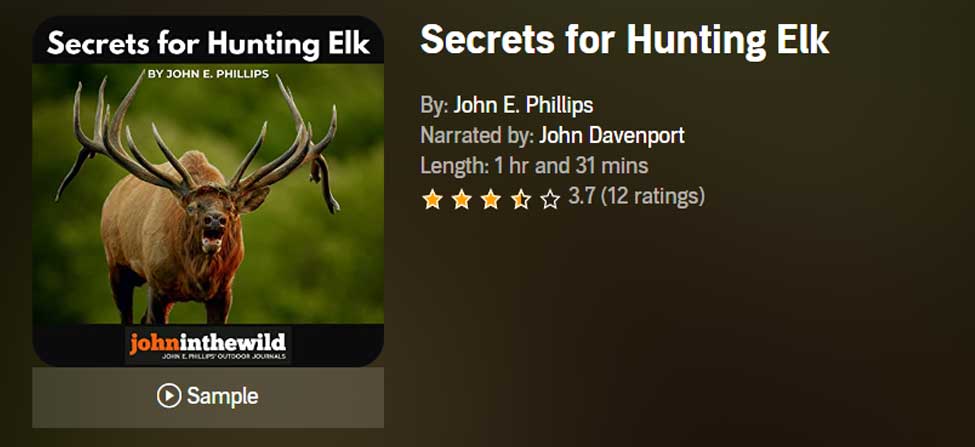
Secrets for Hunting Elk
The quickest, easiest (if there is an easy way), and safest way to find and take that bull elk of a lifetime will be to hunt with a guide.
Chad Schearer, a longtime Montana guide and TV personality, told me, “My hunter is my gun. If I get to the elk, and my hunter isn’t with me, then we don’t take the elk. My job is not only to find the elk but also to help the hunter get to the elk and make the experience as enjoyable as I can for him.” That’s the kind of fella with whom I want to go elk hunting.
An elk hunt can be tough, but it doesn’t have to be so tough that you don’t enjoy it. That’s why this elk hunting book starts with the confessions of an elk guide and with Chad Schearer’s philosophy of what the guide and the hunter’s relationship should be.
A good portion of your success will depend on your physical condition, and Matt Morrett of Harrisburg, Pennsylvania explains how an eastern hunter can get ready physically during June and July to hunt western elk, the animals he describes as, “Like deer or turkeys on steroids.”
Wayne Carlton, well-known elk hunter and TV and video personality from Montrose, Colorado, tells us what types of elk calls to use and what to say to the elk. Mike Miller of Colorado, another elk guide and Mossy Oak video personality, has tactics for the best equipment for bowhunting and gun hunting elk.
You’ll learn helpful strategies and hunting tips in this book, as well as some straightforward hunting methods that will help to make your elk hunt more successful.
“Thanks to the advice in your elk hunting books, I was able to call up a nice 6-point (6X6) bull elk! He was bugling like crazy. I called him in from about a ¼ mile away. Called him into bow range (about 40 yards away). It was a thrill!” ~Rob Brannon
VERSIONS: AUDIBLE & KINDLE
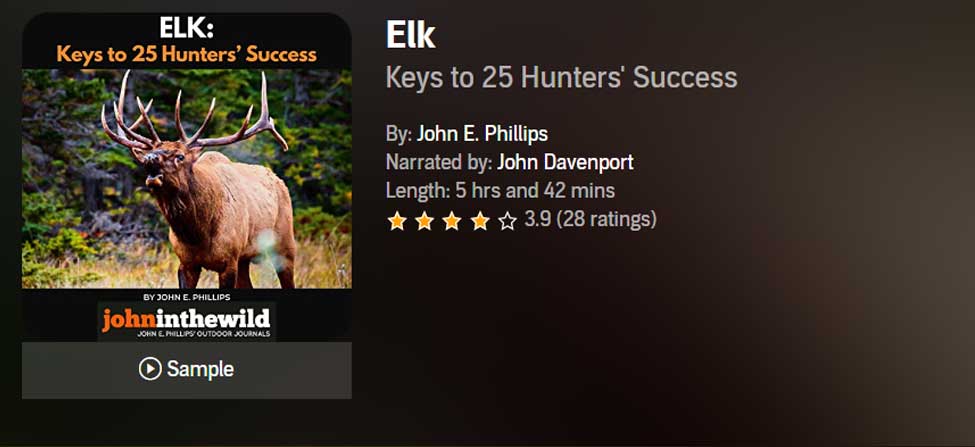
Elk: Keys to 25 Hunters’ Success
Often just one tip or tactic makes the difference in whether you take an elk home to dinner or have to hike back to the truck by yourself. In John E. Phillips’ latest elk book, Elk: Keys to 25 Hunters’ Success, you’ll learn from successful elk hunters the strategies they use to find and take elk.
Many know that the technique that seems to work most often is to hunt where other elk hunters don’t and understand where the elk are before you go on a hunt by studying data from each state, visiting HuntData (see chapter 1), examining maps, and reading postings on elk forums.
This book also tells you how to get ready physically for an elk hunt, including participating in Train to Hunt Competitions, what gear you need to take, how to enjoy a successful do-it-yourself elk hunt, or how to pick the best elk guide for you. You’ll also hear about the X System and the Broken Y System of hunting elk.
Although no one person has all the answers on how to help you find and take your elk, I’m convinced that this book’s outdoors men and women will teach you how to have satisfying elk hunts.
As my friend Karl Badger once told me, “Elk hunting doesn’t get any better than when I ride horses into the high backcountry, see two grizzly bears, hear a pack of wolves howl close to camp all night long, eat plenty of delicious food prepared on a fire and enjoy the company of good friends.”
VERSIONS: AUDIBLE, KINDLE & PRINT
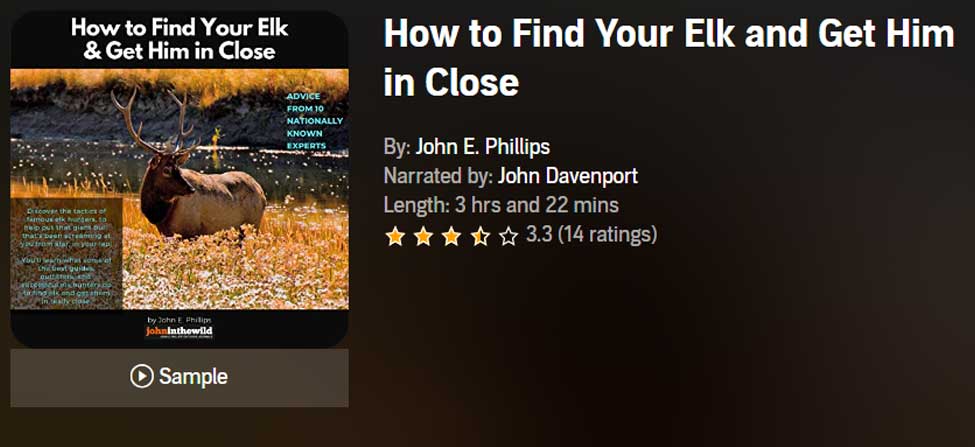
How to Find Your Elk and Get Him in Close will teach you the tactics of 10 nationally known elk hunters, to help put that giant bull that’s been screaming at you from afar, in your lap. You’ll learn what some of the best guides, outfitters, and successful elk hunters do to find elk and get them in really close.
Also in this audiobook, you’ll notice that the majority of the experts call elk to within bow range. We selected numerous bowhunters and bowhunting guides, since the bowhunter has to get much closer to a bull than the gun hunter does – often less than 20 or 30 yards – practically in your lap.
On one elk hunt, I’d heard this bull bugle all morning. My guide had called him within 30 yards, and he was standing just inside black timber. I saw the smoke from his nose wafting out into the icy air less than 30-yards away. All the bull had to do was step out, and I could take the shot with my bow. But then, through no fault of my guide or me, the bull vanished.
The only conclusion I could come up with to understand why the bull I wanted to take with my bow hadn’t stepped out and given me a shot, was because he got raptured. He evidently had left the earth with no trace of himself.
This hunt was when I started wanting to learn more about hunting elk up close. In this book, I’ve tried to find some of the most knowledgeable, experienced, and practical elk hunters. I’ve always found that the best way to learn any outdoor skill, is to either hunt or fish with the best sportsmen in that field.
Often, in elk hunting, that means elk guides, who generally hunt every day of the season and receive a salary for every hunter they guide. So, I’ve put together a group of some of the best elk hunters I know to help us all learn how to find bull elk and get them in close.
VERSIONS: AUDIBLE, KINDLE & PRINT

